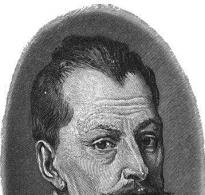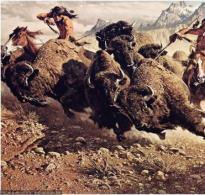What is the youngest letter of the Russian alphabet? Youngest A Few Colon Facts
The letter Yo is the youngest and most controversial letter of the Russian alphabet. She was only 230 years old - remember her maneuvers, subtleties, complexities and intricacies.
Dots over E
Depardieu or Depardieu? Richelieu, maybe Richelieu? Fet or Fet? Where is the universe, and where is the universe, what deed was perfect, and what was perfect? And how to read "Peter the Great" by A.K. Tolstoy, if we do not know whether there should be dots over e in the sentence: "Under such a sovereign, we will rest!"? The answer is not so obvious, and the expression "dot the I" in Russian could well be replaced by "dot the E".
This letter is replaced when printed with "e", but forced to put dots when written by hand. But telegrams, radio messages, and Morse code ignore it. It was transferred from the last to the seventh place of the Russian alphabet. And she managed to survive the revolution, unlike, for example, the more ancient "fits" and "Izhitsa".
What difficulties do the owners of surnames with this letter face in the passport offices and it is not necessary to say. Yes, and before the appearance of passport offices, this confusion was - so the poet Athanasius Fet forever remained Fet for us.
Whether this is acceptable or not is for the reader to judge.
foreign ancestry
The youngest letter of the Russian alphabet "ё" appeared in it on November 29, 1783 - only 230 years ago, which is almost no age for a letter. It was proposed by Princess Dashkova at a meeting of the Russian Academy to replace the inconvenient combination of IO with a cap, as well as the rarely used signs ё, їô, ió, io. The very form of the letter is borrowed from French or Swedish, where it is a full member of the alphabet, denoting, however, a different sound.
It is estimated that the frequency of occurrence of Russian Yo is 1% of the text. This is not so little: for every thousand characters (about half a page of printed text), there are on average ten "ё".
At different times, different options for transmitting this sound in writing were proposed. It was proposed to borrow the symbol from the Scandinavian languages (ö, ø), Greek (ε - epsilon), simplify the superscript symbol (ē, ĕ), etc.
Path to the alphabet
Despite the fact that Dashkova proposed this letter, Derzhavin is considered its father in Russian literature. It was he who was the first to use a new letter in correspondence, and also the first to print a surname with "e": Potemkin. At the same time, Ivan Dmitriev published the book "And my trinkets", imprinting all the necessary points in it. But the final weight was acquired by "yo" after N.M. Karamzin, an authoritative author, in the first almanac Aonides published by him (1796) printed: “dawn”, “eagle”, “moth”, “tears”, as well as the first verb - “drip”. True, in his famous "History of the Russian State" "yo" did not find a place for itself.
And yet, the letter "ё" was in no hurry to officially enter the Russian alphabet. Many were embarrassed by the “yoking” pronunciation, because it was too similar to “servile”, “low”, while the solemn Church Slavonic language ordered to pronounce (and, accordingly, write) “e” everywhere. Ideas about culture, nobility and intelligence could not come to terms with a strange innovation - two dots above the letter.
As a result, the letter "ё" entered the alphabet only in Soviet times, when no one was trying to show off intelligence. Yo could be used in the text or replaced by "e" at the request of the writer.
Stalin and maps of the area
In a new way, the letter "e" was looked at in the war years of the 1940s. According to legend, I. Stalin himself influenced her fate by ordering the obligatory printing of "yo" in all books, central newspapers and maps of the area. This happened because German maps of the area fell into the hands of Russian intelligence officers, which turned out to be more accurate and "meticulous" than ours. Where the pronunciation of "ё" in these cards was "jo" - that is, the transcription was extremely accurate. And on Russian maps they wrote the usual "e" everywhere, and the villages with the names "Berezovka" and "Berezovka" could easily be confused. According to another version, in 1942, Stalin was given an order to sign, in which the names of all the generals were written with an "e". The leader was furious, and the next day the entire issue of the Pravda newspaper was full of superscripts.
Torment of typists
But as soon as the control weakened, the texts rapidly began to lose their "ё". Now, in the era of computer technology, it is difficult to guess the reasons for this phenomenon, because they are ... technical. On most typewriters, there was no separate letter "ё", and typists had to contrive, doing unnecessary actions: type "e", return the carriage, put a quotation mark. Thus, for each "e" they pressed three keys - which, of course, was not very convenient.
Handwriters also spoke of similar difficulties, and in 1951 A. B. Shapiro wrote:
“... The use of the letter ё has not received any wide distribution in the press to date and even in the most recent years. This cannot be considered a random occurrence. ... The very form of the letter ё (a letter and two dots above it) is an undoubted difficulty from the point of view of the motor activity of the writer: after all, writing this frequently used letter requires three separate techniques (letter, dot and dot), and each time you need to follow so that the dots are symmetrically placed above the sign of the letter. ... In the general system of Russian writing, which almost does not know superscripts (the letter th has a simpler superscript than ё), the letter ё is a very burdensome and, apparently, therefore not sympathetic exception ".
Esoteric controversy
Disputes about "yo" do not stop until now, and the arguments of the parties sometimes surprise with their unexpectedness. So, supporters of the widespread use of this letter sometimes build their argument on ... esotericism. They believe that this letter has the status of "one of the symbols of Russian life", and therefore the rejection of it is a disregard for the Russian language and Russia. “A spelling mistake, a political mistake, a spiritual and moral mistake” calls the spelling e instead of e the writer V.T. Proponents of this point of view believe that 33 - the number of letters of the Russian alphabet - is a sacred number, and "yo" occupies the sacred 7th place in the alphabet.
“And until 1917, the letter Zh was blasphemously placed in the sacred seventh place of the 35-letter alphabet,” their opponents answer. They believe that dots over "e" should be put only in a few cases: "in cases of possible discrepancies; in dictionaries; in books for those who study the Russian language (i.e., children and foreigners); for the correct reading of rare toponyms, names or surnames ". In general, it is these rules that are now in effect with respect to the letter "e".
Lenin and "yo"
There was a special rule about how the patronymic of Vladimir Ilyich Lenin should be written. In the instrumental case, it was mandatory to write Ilyich, while every other Ilyich of the Soviet Union after 1956 was prescribed to be called only Ilyich. The letter Yo singled out the leader and emphasized his uniqueness. Interestingly, this rule has never been canceled in the documents.
A monument to this cunning letter stands in Ulyanovsk, the hometown of Nikolai Karamzin's "yofikator". Russian artists came up with a special badge - "epirayt" - for marking certified publications, and Russian programmers - "etator" - a computer program that automatically places a letter with dots in your text.
January 9, 2012There is one letter in the Russian alphabet whose "birthday" is known exactly - November 29, 1783. On that day, Ekaterina Dashkova, an associate of Empress Catherine II, proposed replacing the digraph "io" with the letter "Yo". Academicians liked this simplification in writing words, and the idea received support.
Two years later, the historian Karamzin introduced the letter Yo into active use. The letter was placed at the very end of the alphabet, next to the "Izhitsa" and "Fita". After the revolution, when they “removed” everything superfluous, the “extra” letters were also removed from the alphabet. But "Yo" was left.
Interesting fact. During the Second World War, the Germans did not replace a single letter on their maps of the Soviet Union, and each "ё" was in its place. Seeing the trophy cards, Stalin was furious - from that moment they began to appreciate the letter "e".
There are many curiosities, strange cases associated with the letter “e”, and all of them happened for the simple reason that it was not clearly spelled out in which cases “e” should be written and in which “e”. For example, this is how the poet Fet became Fet with us. Clear rules governing when to write which letter were adopted in 1956. But over time, they became obsolete, and gradually the letter "ё" became more and more rare in the texts. Nowadays, this letter also has both opponents and supporters, and even a union of “yofikators” has been created, which is engaged in restoring a fair attitude towards the letter “ё”.
Now if you are asked
Game "Who wants to be a millionaire?" for December 28, 2019 has already been aired in the eastern regions of the country, so the answers to all the questions of the game are already known to many and they can be found on the Internet, as well as on the website in the same section. A little later, an article with all the questions and answers in the game for 12/28/19 will be published on the site.
After this program, which was released in the form of a quiz, went to the big screens, it gathered a huge number of fans. The coveted prize is three million rubles, which can be obtained after the players give answers to fifteen questions. Each subsequent question is much more difficult than the previous one, so in order to win, you need to have certain knowledge in different areas, well, of course, a little luck. The game recently added a new "Question Replacement" tooltip, but there are still four in total.
What is the youngest letter of the Russian alphabet?
Around 863, the brothers Cyril and Methodius from Thessalonica (Thessaloniki), by order of the Byzantine emperor Michael III, streamlined the script for the Slavic language. After the appearance of the Cyrillic alphabet, which goes back to the Greek statutory (solemn) letter, the activity of the Bulgarian school of scribes develops (after Cyril and Methodius).
There is a letter in the Russian alphabet whose birthday has the exact and youngest date - November 29, 1783. The Academy of Literature met that day in the house of Ekaterina Dashkova, an associate of Catherine II. Participation in the discussion of the Slavic-Russian Dictionary (later known as the "Dictionary of the Russian Academy") was taken by such minds as Derzhavin and Fonvizin.
The discussions ended, and the academicians began to gather, but Ekaterina Romanovna asked how to write the word "Christmas tree". The answer was unequivocal at that time - "Iolka". And then Dashkova suggested replacing the digraph "io" with one letter "Yo".
Hello ladies and gentlemen. Today we have Saturday December 28, 2019 on our calendars, on Channel One there is a TV game "Who Wants to Be a Millionaire?". The players and host Dmitry Dibrov are in the studio.
In this article, we will consider one of the interesting and difficult questions of today's game. A general, traditional, article with a full review of the TV quiz "Who wants to be a millionaire?" is already being prepared for publication on the Sprint-Answer website. for 12/28/19. In it you can find out whether the players won something today, or left the studio with nothing. In the meantime, let's move on to a separate question of the game and the answer to it. Efim Petrunin and Pavel Barshak participate in the second part of the game.
What is the youngest letter of the Russian alphabet?
The Russian alphabet (Russian alphabet) is the alphabet of the Russian language, in its current form - with 33 letters - existing since 1918 (the letter Yo was officially approved only since 1942: it was previously believed that there were 32 letters in the Russian alphabet, since E and Yo were considered as options the same letter). The modern Russian alphabet consists of 33 letters. The alphabet in its current representation has existed since 1942. In fact, the year 1918 can be considered the year of the formation of the modern Russian alphabet - then it consisted of 32 letters (without the letter ё).
Answer: Yo.
The letter Yo is the youngest in the Russian alphabet. The letter was invented in 1783 by Ekaterina Dashkova, an associate of Catherine II, princess and head of the Imperial Russian Academy.





